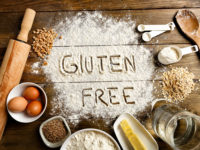I’m often asked whether my job, leading the United Kingdom (UK)’s fight against serious criminality in food supply chains, has made me an anxious consumer. I always sense that my response disappoints. Because the truth is, it really hasn’t.
Sure, I try to make the right food choices when shopping, and, yes, I even occasionally glance at ingredients and nutritional information on the packaging. Counterintuitively, in the eyes of some, my experience since 2015 as Head of Food Crime at the National Food Crime Unit of the Food Standards Agency in London, has actually increased my confidence in the integrity of the food I eat.
So I shop and dine with confidence because what I’ve seen to date leads me to believe that food production, manufacture and retail form an industry populated by honest and well-intentioned people who care about bringing high quality and interesting things to our plates. Although not every country is quite so fortunate, the overwhelming majority of food and drink produced and sold in the UK and indeed in the United States is safe and what it says it is.
The second question new acquaintances often ask concerns, what I call, the ‘Eww Factor.’ Quite understandably, people have a slightly salacious desire to know the most revolting or bizarre substance I’ve found food to be adulterated with. Again, my answer seldom lives up to the expectations of the questioner. To define food crime by its Eww Factor is to fundamentally misunderstand the way fraudsters operate.
To be successful as a food criminal, one needs to operate beneath the radar. A good food crime is one that endures. Fraudsters do not wish to draw attention to a fraudulent product by poisoning people or adversely altering its organoleptic properties. Introducing an Eww Factor in the course of a food fraud would simply be bad for business.
Disappointing though it may be to some, the truth is that food crime is considerably more subtle, nuanced and endlessly fascinating than the popular narrative suggests.
Dishonesty is present in any industry as it is in any walk of life. We humans are all capable of taking a different route from the one suggested by our moral compass if suitably motivated. I call these drivers push and pull factors. Within food businesses, push factors might include pressures to remain competitive in a sector with tiny margins, pressure from the bank, pressure from shareholders or pressure sometimes just to stay afloat. A pull factor might be about winning a lucrative contract, increasing profitability, breaking into new markets or simply making lots and lots of money. Push factors result from need, pull factors from greed. I see both.
In 2013, the discovery in the UK of horse DNA in processed beef products heralded a new paradigm. Although rogues have been deceiving people about food for centuries, this was very different. Different in scale, different in scope and, quite frankly, different in terms the degree of complexity and planning involved in what was actually the simple substitution of one meat species for another.
So industry and government looked for answers. There was an understandable desire after the horse meat incident to point the finger of blame at an exogenous, organized criminal threat ruthlessly targeting an unsuspecting food industry. While there are certainly pockets of true organized crime involved in food, the inconvenient truth is that most food criminals I see are time-served participants in the food industry. These are demonstrably food people rather than crime people. They are good businesses gone bad rather than fundamentally bad businesses. This matters because, in order to reduce a criminal threat, one first needs to understand it.
With respect to all crime, there needs to be the means, the motivation and the opportunity for an offense to happen. If one of those elements is absent, the crime simply doesn’t take place. Preventing crime is therefore very much about removing or reducing any one of those elements to a level where offending becomes impossible or simply unattractive.
Those very same elements apply to food crime. The push and pull factors already mentioned provide adequate motivation to defraud food consumers and opportunities also exist in abundance. The natural limitations of audit, oversight and vigilance, both regulatory and commercial, leave many opportunities for fraud to take place beyond the gaze of capable guardians.But acquiring the means to offend presents challenges to those without an established footprint in the food industry. Acquiring the tools, the equipment, the know-how and the routes to market at scale can be a formidable barrier to entry for many criminal actors looking to diversify from, for example, drug trafficking or conventional forms of acquisitive crime.
But we cannot afford to be complacent because, as night follows day, organized crime groups will find a way to unlock the huge criminal profits available from food.
Where we do see organized criminals operating already in the UK is where established criminal enterprises, networks and infrastructures are repurposed. Counterfeit alcohol is one such example, where established smuggling and tax evasion models can be refocused.
Although food people are largely responsible for food crime, this is not to say that the food industry is to blame for food crime. Criminals are to blame for food crime. It’s just that, more often than not, these criminals are walking among us.
Some say that food crime only really matters when it results in an acute public safety crisis. I disagree. Food crime matters because it strikes at the very heart of that vital bond of trust that exists between us and those who bring food from the farm to our fork. It matters too because little is known about the long-term impact of some of its manifestations.
Food crime also matters because where false nutritional claims are made about a product, it is often the most vulnerable citizens, our children, who suffer. It matters too because when nations such as ours have a reputation for producing safe, high quality and interesting food, it’s in everyone’s interests to keep it that way.
So what is food crime? Well there’s certainly no universally recognized definition, so in order to define the remit of my unit, I tried to come up with a relatively simple one: “knowingly selling inauthentic food.” Food crime is often sophisticated, generally serious and always involves dishonesty. It will commonly involve a seller misrepresenting one facet or another of a food product to a buyer. This might include its composition, durability, country of origin, production method or health properties. It can be the subtle adulteration of a single ingredient or the gross substitution of an entire product with something inferior.
Offenders might seek to profit dishonestly from an inexpensive staple product sold to the mass market or from a high value niche product sold to just a few. Food crime can be business to business or business to consumer, but in almost every case, the detriment, the victimhood, sticks with the end consumer.
Protecting the vulnerable in society from serious crime motivates me tremendously and has done for more than a quarter of a century. Victims of food crime are uniquely vulnerable. We have to eat so we have to engage with the food industry. As most of us don’t have fully equipped laboratories in our kitchens, we have to trust every grower, processor, manufacturer, storage company, haulage contractor and retailer to act with the utmost integrity. The National Food Crime Unit aims to protect the public because, unlike most forms of crime, there is actually very little the public can do to protect themselves.
The National Food Crime Unit applies law enforcement methodologies and thinking in its efforts to tackle this criminality. I think this puts us at an advantage over food criminals who, as food people, will rarely have been exposed to this.
Our approach is based on four Ps: Pursue, Prevent, Protect and Prepare.
1. Pursue is about identifying and bringing offenders to justice. Locking up the bad guys or the route one of law enforcement if you like.
2. Our Prevent activity aims to stop people becoming offenders in the first place. It focuses on deterrence through strong messaging and early disruption interventions. We know that a journey exists between low level regulatory noncompliance and more serious fraud offending. Prevent is about interrupting that journey.
3. Our Protect work is also based on crime prevention but this time the focus is on victims. More specifically the focus is on preventing food businesses from becoming victims. We call this target hardening.
4. The final P stands for Prepare. This is where the National Food Crime Unit works to build counter-fraud capability both at home and overseas. In May, at a cross-sector event in Minneapolis, I was proud to announce the establishment of the Global Alliance (GA) on food crime. The GA is being developed in partnership with my valued friend and colleague Karen Gussow from the food crime unit in The Netherlands. Karen will join me as its co-chair for the first 3 years. The aim of the GA to bring together thought leaders in law enforcement from around the world to form a coalition of the willing in the fight against food crime. It will develop a global and multidimensional approach to address a global, multidimensional and supremely challenging crime problem. I see U.S. participation in the GA as important to its development and I’m delighted to say that the launch in Minneapolis was warmly welcomed by relevant U.S. federal agencies.
We remain in the foothills of our understanding of and response to the threat from food crime. Progress has been made and the key to more is collaboration. Removing barriers and increasing collaboration between sectors, between nations and between disciplines will go a long way towards protecting the interests of consumers and the legitimate food industry throughout the world.
In my view, food crime takes away our inalienable right to absolute discretion about what we take into our bodies. If we truly are what we eat, in physiological, psychological and cultural terms then food crime really does matter.
Andy Morling is Head of Food Crime at the National Food Crime Unit of the Food Standards Agency.
What You always Wanted to Know about Food Crime but Were Afraid to Ask




